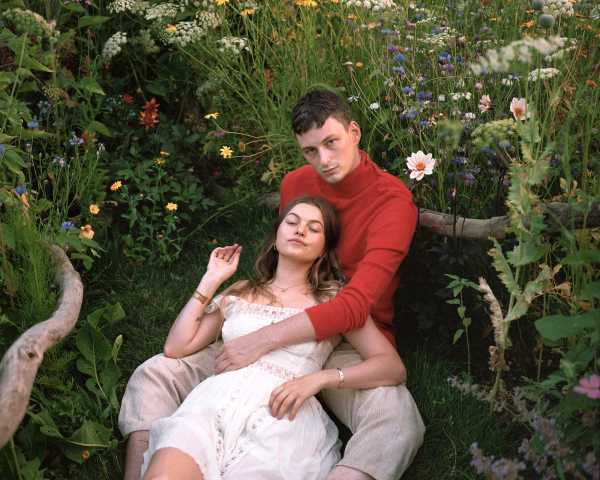
Save this storySave this storySave this storySave this story
In the spring of 2020, the photographer Siân Davey was, like much of the rest of humanity, locked down at home with her family. Home in Davey’s case is in Devon, in the South of England, in a rented house on the estate of Dartington Hall, a medieval manse turned outpost of bohemia where her neighbors include both local farmers and internationally celebrated artists. The garden had long been left untended, and Davey’s eldest child, Luke—who, like Davey, is a practicing Buddhist—suggested that the family restore it. “He said, ‘Why don’t we turn it into something so beautiful that people just want to be photographed by you in it?’ ” Davey explained recently. “It’s a cliché, but it was literally, like, putting a seed in the ground. It needs so much for it to grow. But, also, it’s about the interconnectedness of everything.”


It took twelve weeks to clear the ground, and hours of painstaking research into seeds and cultivation methods to plant the garden. A year later, when it had grown in, neighbors would stop by and talk. “People were telling us their stories. They had been isolated for a long time, and those stories began to be woven into the garden,” Davey, who worked as a psychotherapist before she took up photography a decade ago, recalled. By the time the first lockdown ended, in the early summer of 2020, the garden was bursting into bloom. “When the flowers came, so did the people, in a very different way,” Davey went on. “People came to the garden wall and cried. How many tears have I seen in the garden?” Davey’s series of photographs of her friends and neighbors, pictured amid riotous blooms in warm sunlight, is a document born of the pandemic, even though there isn’t a discarded blue surgical mask or half-filled bottle of hand sanitizer in sight. Rather, the images capture the strange and heightened atmosphere of that moment, and the tenderness that prevailed after a period of enforced stillness. In the garden, life is resurgent, at first tentatively and then fervently.

The garden itself is exposed—the wall that separates it from the street is only two feet high. We see a gable made of honey-colored stone, a slate roof, evidence of nearby human habitation. Yet the photographs are extremely intimate. Many of Davey’s subjects are topless, or entirely naked—a gesture, she says, that occurred spontaneously at her subjects’ suggestion, rather than at her request. A couple who passed by the garden on their way to swim in the river are pictured lying on the grass in an embrace, the last sunlight gleaming on skin and hair. Two young women standing disrobed look like Botticelli’s Venus and her punk cousin. Kneeling on the grass, surrounded by daisies and sunflowers and lush foliage, a mother cradles her daughter in strong, tanned arms. The daughter has Rett syndrome, a devastating genetic condition that demands round-the-clock care. “The mother said to me, ‘I just want a picture with my daughter where I can look at her body and not see it in medical terms, in practical terms,’ ” Davey explained. The pair are immersed in the foliage and flowers, as if stitched into the heart of a millefleur tapestry from the fifteenth century.



One local recruit was a neighbor who, during lockdown, took to wearing women’s clothing publicly for the first time. “This person said, ‘I have been doing it for years and I really want to not hide it,’ ” Davey explained. “I said, ‘Why don’t you come to my garden and bring some clothes, and I’ll photograph you?’ We were just kind of playing recklessly in the garden. It was extraordinarily shameless.” A portrait of two girls on the cusp of womanhood, with radiant skin and tousled, tendrilled hair, could be transposed from the pages of a fashion magazine; their presence in the series serves to amplify how limited the culture’s readily accepted standards of beauty are. Creating the garden, Davey said, felt like “an offering to humanity.” Very often, she went on, it is easier to talk about what is not going very well than it is to talk about joy. “It all came down to permission, in this space, for people to be who they really are,” she said. “It felt like the potential for the whole world was held in that garden—it was democratic, and inclusive.”



After three years, the project had run its course: for all its apparent wildness, the garden requires hours of care daily, which has become more than Davey and her family can manage. “I’m not a full-time gardener,” she said. “I sometimes wish I was, but it’s not my purpose.” With or without her care, the garden will nonetheless keep growing. “This year, we built the compost really high against the wall, and the gourds are going to start rambling all over the garden and spilling out all over the path,” she said, adding, “Nature just wants to give. It’s just here. You try to limit it, and it will find a crack. Nature just keeps on being beautiful.”

Sourse: newyorker.com







